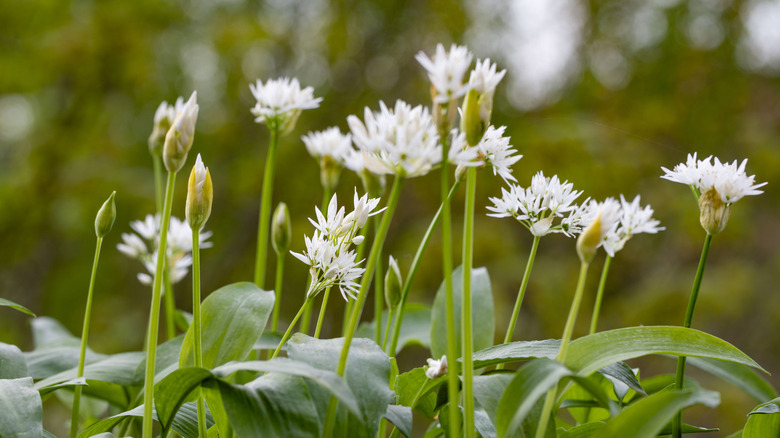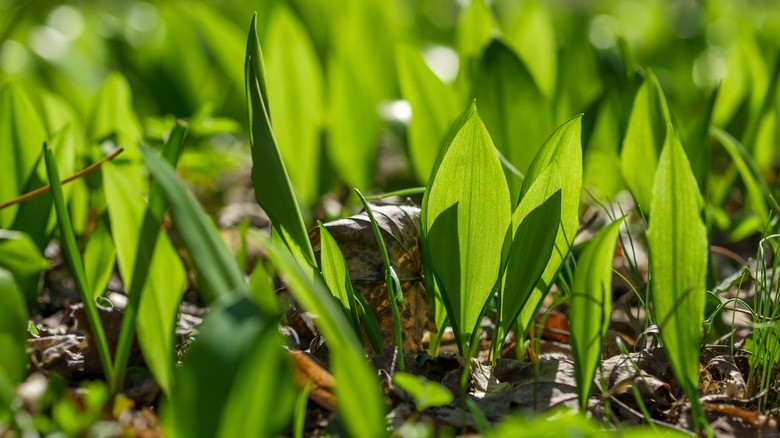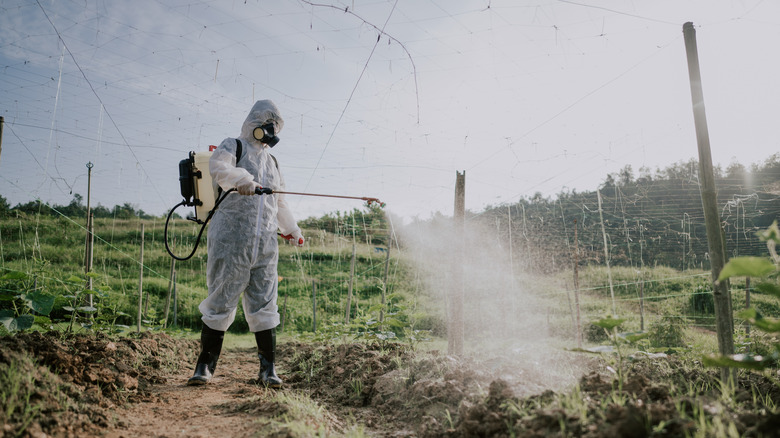How To Prevent Wild Garlic From Taking Over Your Lawn
Wild garlic, or Allium ursinum, is a perennial plant native to damp, shaded woodlands in Europe and Asia. It has adapted to a variety of environments, making it a common sight in many gardens and lawns. Dealing with wild garlic on your lawn can be a real headache. This plant, known for its fast growth, can quickly overrun your garden if you don't keep an eye on it. You'll need to act swiftly if you notice it. The key to getting rid of this invasive plant involves a combination of mowing, hoeing, and consistent upkeep. This is because wild garlic sprouts from small bulbs underground, which can give rise to many plants.
Spotting the plant is usually easy. When crushed, the seeds have a strong garlic smell. The time they appear is another indication. You'll normally find them growing on your lawn, particularly in the late winter or early spring. As the spring arrives, watch for the emergence of curly, grass-like shoots and the initial development of bulbs. The bulbs can stay dormant, meaning that eradication is a long-term commitment rather than a quick fix. Also, keep in mind that their early growth gives it a competitive advantage. Knowing this, you can time your control methods more effectively. All in all, consistent attention is necessary — ignoring the problem even for one season can allow wild garlic to rebound with vigor.
Tackling wild garlic: physical removal techniques
When you're up against wild garlic in your garden, the first line of defense is physical removal by digging, a straightforward yet demanding task. This approach is vital for initial control, targeting the very source of the problem: the bulbs. Using a garden fork or a spade, gently loosen the soil around the plants. As you dig, aim to remove the entire bulb. These bulbs can be surprisingly small, so careful attention is needed to ensure none are left behind. After uprooting the plants, sift through the soil with a fine-mesh sieve. This extra step helps catch any tiny bulbs or fragments that might escape the initial removal.
An alternative method, especially for newly sprouted plants, is to mow them down. Mowing when the stems are getting longer, but haven't reached their full height, can help stop or lessen the growth of small new bulbs. However, the plants will still make dormant bulbs right at the plant's base. Additionally, working the soil during the late autumn to winter months can effectively reduce the strength of the plant, making it easier to manage and eventually eradicate. Remember, patience is key here. Wild garlic is notorious for its persistence, and it's unlikely you'll get every single bulb on the first try. You'll need to regularly monitor the area and repeat removals as new sprouts appear. Over time, you'll notice a decrease in new growth as you successfully deplete the stock of bulbs in the soil.
Navigating herbicide use for wild garlic control
When it comes to managing wild garlic, weed killers play a crucial role, specifically post-emergent types. It's essential to understand that, while there are no herbicides designed to prevent wild garlic from emerging (pre-emergent), there are effective solutions for dealing with it once it has sprouted (post-emergent). This distinction is key to formulating your strategy. Using herbicides may seem daunting, but it's about precision and timing. When applying, it's crucial to follow the manufacturer's guidelines strictly. This ensures not only the effectiveness of the product, but also minimizes the risks to other plants in your garden.
Remember, herbicide application is not a one-and-done solution. Wild garlic is resilient, and its bulbs can remain dormant for a while before sprouting again. This means you'll likely need to apply herbicides annually to maintain control over the plant. Consistency is your ally in this ongoing battle. While herbicides are an important tool, they should be part of a broader approach. Combining herbicide use with physical removal methods, like digging and mowing, provides a more comprehensive strategy. This integrated method tackles wild garlic more effectively, addressing both immediate and long-term control. Furthermore, consider the health of your lawn and garden when using herbicides. Regular lawn maintenance, proper fertilization, and ensuring good soil health will help create an environment less hospitable to wild garlic.


